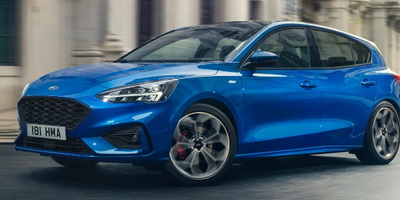A week spent in Fords best of the compact class equipped with the six speed dual dry clutch transmission
Pros:
Great styling
Upscale interior
Responsive steering
Solid chassis dynamics
Cons:
Rear seating a bit tight
Dual dry clutch transmission might take a bit of getting used to for some drivers

Back to the Focus
Last summer we had a chance to test drive the new designed and engineered-in-Europe Ford Focus – a car that impressed everyone here and the nicest one since the first-generation model was introduced to the U.S. in 1999.
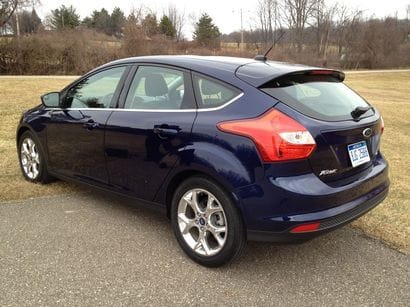
While we thoroughly enjoyed driving it, the SE was equipped with a 5-speed manual transmission. And while many of us here prefer a manual especially in a vehicle with sporting pretensions like the Focus, most buyers on this side of the pond will be equipping theirs with an automatic.
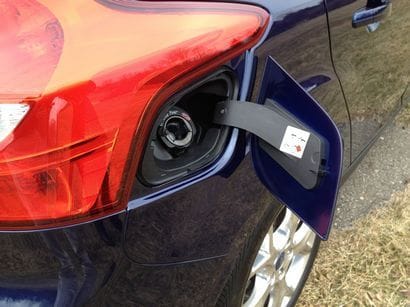
Another ulterior reason was the fact that Ford’s PowerShift dual dry clutch automatic has drawn criticism from owners and pundits alike and, quite frankly, we wanted to experience for ourselves what all the fuss was about.
Not to spoil the fun, but as it turns out, we couldn’t understand why Ford has received the complaints that it has about its top shelf tranny.
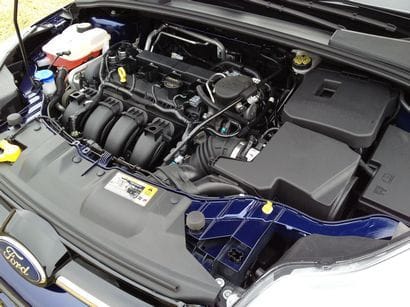
2012 Ford Focus Engineering
For 2012, it’s back to the future for Ford’s latest compact new car. Once again, North American drivers can enjoy the most current underpinnings given to the Focus, as Ford finally gives the heave-ho to the C170 platform the American version has hung onto since 2000 and replaces it with the company’s latest C1 architecture.
Not only are its mechanicals up-to-date, but its styling no longer has to take a back seat to anything out there. Even though American buyers will be denied the 5-door station wagon, we get the 4-door sedan and also, wonder of wonders, the 5-door hatchback body style here in the U.S. (in the process lowering the 2011 sedan’s 0.320 drag coefficient to a mere 0.297).

Kinetic design
The company’s “One Ford” plan dictates that Ford of Europe is responsible for both the engineering and styling of the company’s small cars.
Styling responsibilities for the Focus, therefore, were placed with Martin Smith, Ford of Europe’s Executive Director of Design. Like the Fiesta, Smith and company have done a superb job styling the all-new Focus. Although opinions of styling certainly very subjective, Ford’s C-segment car is almost certainly the best-looking vehicle in its class currently gracing our roads.
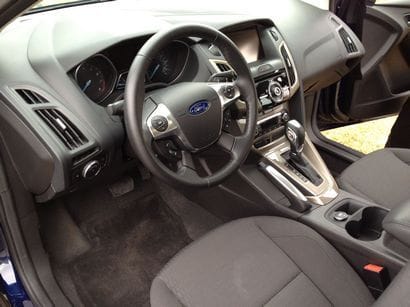
Interior
Inside, there is plenty of front seat room for adults of just about all sizes. The driver’s seat is even equipped with a height adjustment feature that allows those who are somewhat vertically challenged to compensate for the somewhat high beltline of the Focus.
Interior materials are also first-rate. Soft touch surfaces abound with rich-looking details on both the dashboard and door trim.
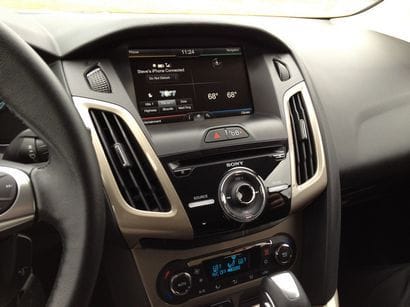
Because our SEL was equipped with the MyFord Touch/HD Sirius/navigation package, the 27 dashboard buttons we complained about on our previous Focus SE were replaced by a touchscreen – giving the former “button central” location a clean, minimalist look. We also found the software interface to be much more intuitive than earlier versions.
Interior cargo space is also generous at nearly 24 cubic feet, although rear passenger legroom for adults is a fit tight at 33.2 inches.
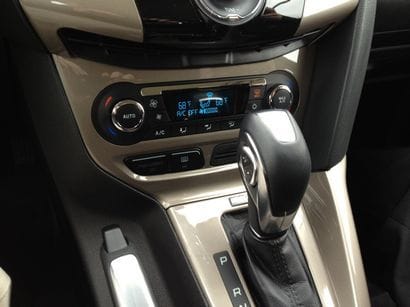
PowerShift transmission
If you were to look inside the transmission case, you wouldn't find the torque converter and wet clutches of an ordinary hydraulic transmission. Instead, the PowerShift consists of two manual transmissions (one carrying the odd gears, 1, 3, and 5 with the other carrying the even gears, 2, 4, 6, and reverse) inside the same case that work in parallel. Each transmission has its own independent computer-controlled clutch unit plus electromechanical actuators that shift the gears.
The dual clutch unit is considered to be an automatic because the gear changes are controlled by a computer that directs the clutches to engage and disengage while delivering power to the wheels even during gear changes. The PowerShift dual clutch transmission also benefits from a number of Ford-developed innovations including:
Torque Hole Fill: Engineering that eliminates the slight hesitation felt during acceleration when a transmission shifts into a higher gear. The PowerShift is able to send an uninterrupted stream of torque to the wheels for smooth acceleration
Hill Start Assist: If sensors detect the vehicle is on a slope of 5 degrees or more, this feature automatically prevents the car from rolling backward during the time the driver moves his or her foot from the brake to the accelerator with the computer controlling the brake pressure and engine to hold the car in place
Neutral idle: This improves fuel economy by eliminating the engine drag of a traditional hydraulic transmission during vehicle idle.
Reduced weight: The PowerShift weighs nearly 30 pounds less than the four-speed automatic transmission in the 2011 Focus.
After a week spent driving mostly around town (and achieving an average of 28 mpg), I came away impressed with Ford’s latest engineering effort. The only slightly disconcerting moment came when I was stopped on an incline of less than 5 degrees and took my foot off the brake. The Focus did roll back slightly, but the sensation was no different than that of a manual transmission.

Equipment
Needless to say, our Focus hatchback in SEL trim came very well equipped. 16-inch alloy wheels, four-wheel disc brakes, power windows, mirrors (with slick blind spot “spotters”) and door locks with keyless entry were all standard. Leather wrapped tilt and telescoping steering wheel, rear spoiler, variable wiper and window defroster, ambient lighting, automatic climate control and an AM/FM/CD/MP3 player with auxiliary input jack and Ford’s basic SYNC infotainment system were also part and parcel of our Fiesta.

Another particularly nice touch is the fact that the Variable-speed windshield wipers both sweep from the center and outboard to the edges of the windshield, giving those of us who do a lot of driving in inclement weather the best possible visibility in clearing off both rain and snow.
Finally, stability control and a full complement of airbags including driver/passenger, driver knee, side and side curtain airbags are also standard.

Options included Ford’s “Rapid Spec 301A” option ($1,170) that adds MyFord Touch and the Sony 10-speaker package along with HD and Sirius satellite radio. It also had t touchscreen navigation ($795 when ordered with 301A) and 17-inch polished alloy wheels ($495).
Base price was $21,065 and, with destination, the total MSRP bottom-lined at $24,075 including a $675 destination and delivery charge.
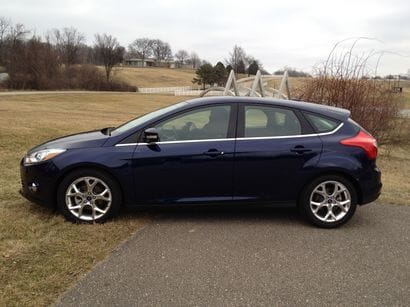
On the road
Once again, on the road the automatic-equipped version of Ford’s latest-generation C-segment vehicle was a blast to drive.
All gasoline-powered Focuses feature Ford’s 2.0-liter inline-4 that combines high-pressure direct injection and twin independent variable camshaft timing and produces 160 horsepower and 146 lb.-ft. of torque.
In addition to the PowerShift six-speed, helping to lay this power to the pavement is an advanced torque vectoring control system that acts much like a limited-slip differential. This system, according to Ford, is especially effective in the curves for “applying an imperceptible amount of braking to the inside front wheel so that more of the engine torque goes to the outside wheel with greater traction.”

The Bottom Line
As I’ve said before, if looks could kill I’d be in the morgue right now. The Focus continues to be one of the best-looking cars in its class. It’s also a lot of fun to drive. With more than enough power for straight line acceleration, its handling is solid and, even through the curves, feels stable and confidant.
Once American drivers get used to its dual dry clutch automatic, I’m sure we’ll hear less quibbling about its few eccentricities.
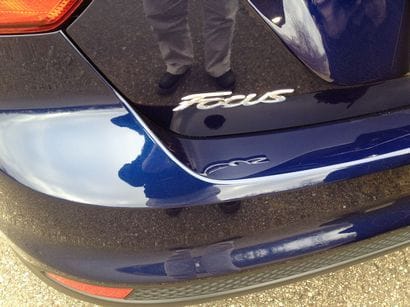
Once again, I believe Ford has another segment-leading vehicle on its hands in the automatic-equipped Focus. And the best news is that American drivers, not just those in Europe, get to enjoy it.




